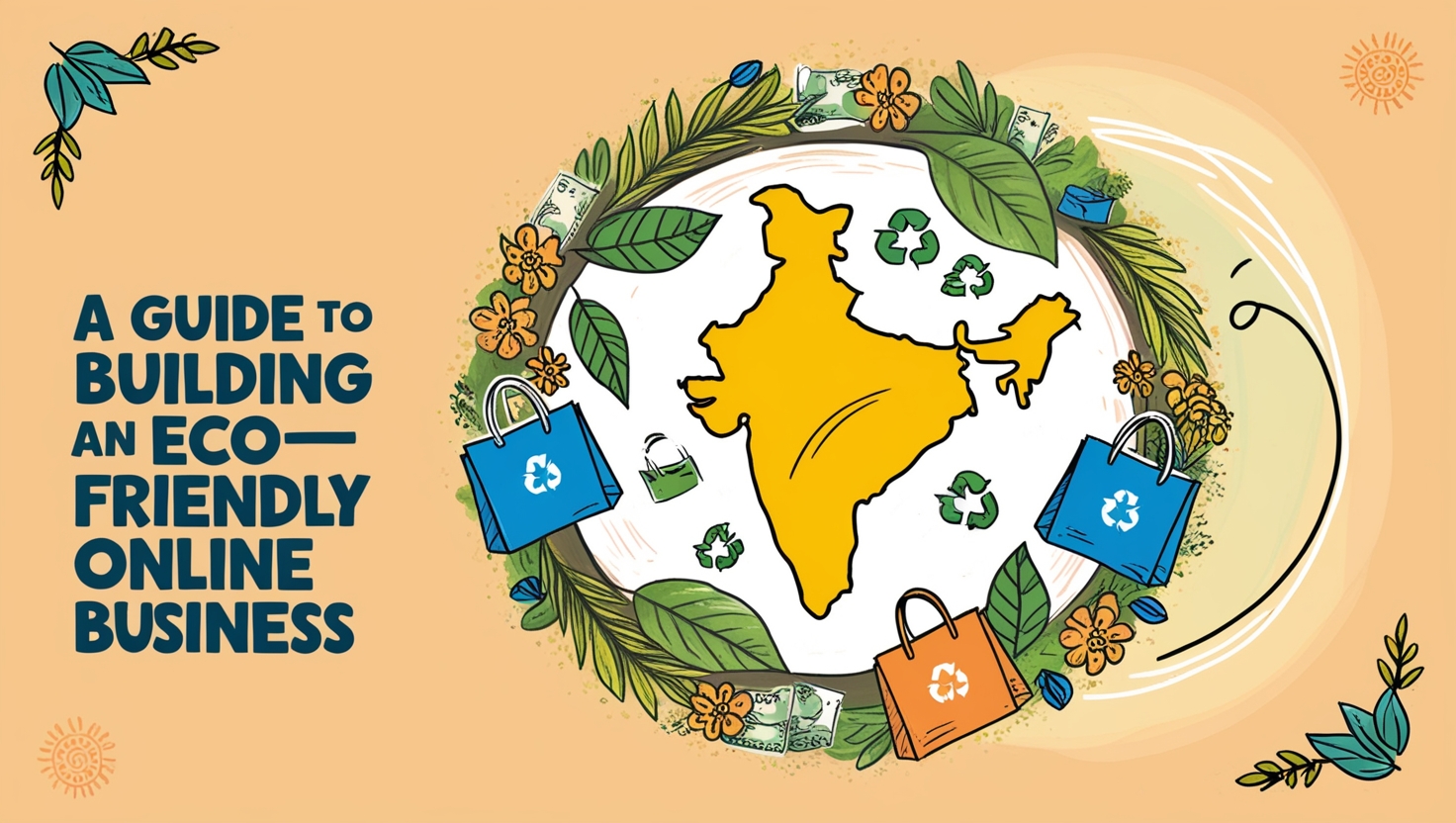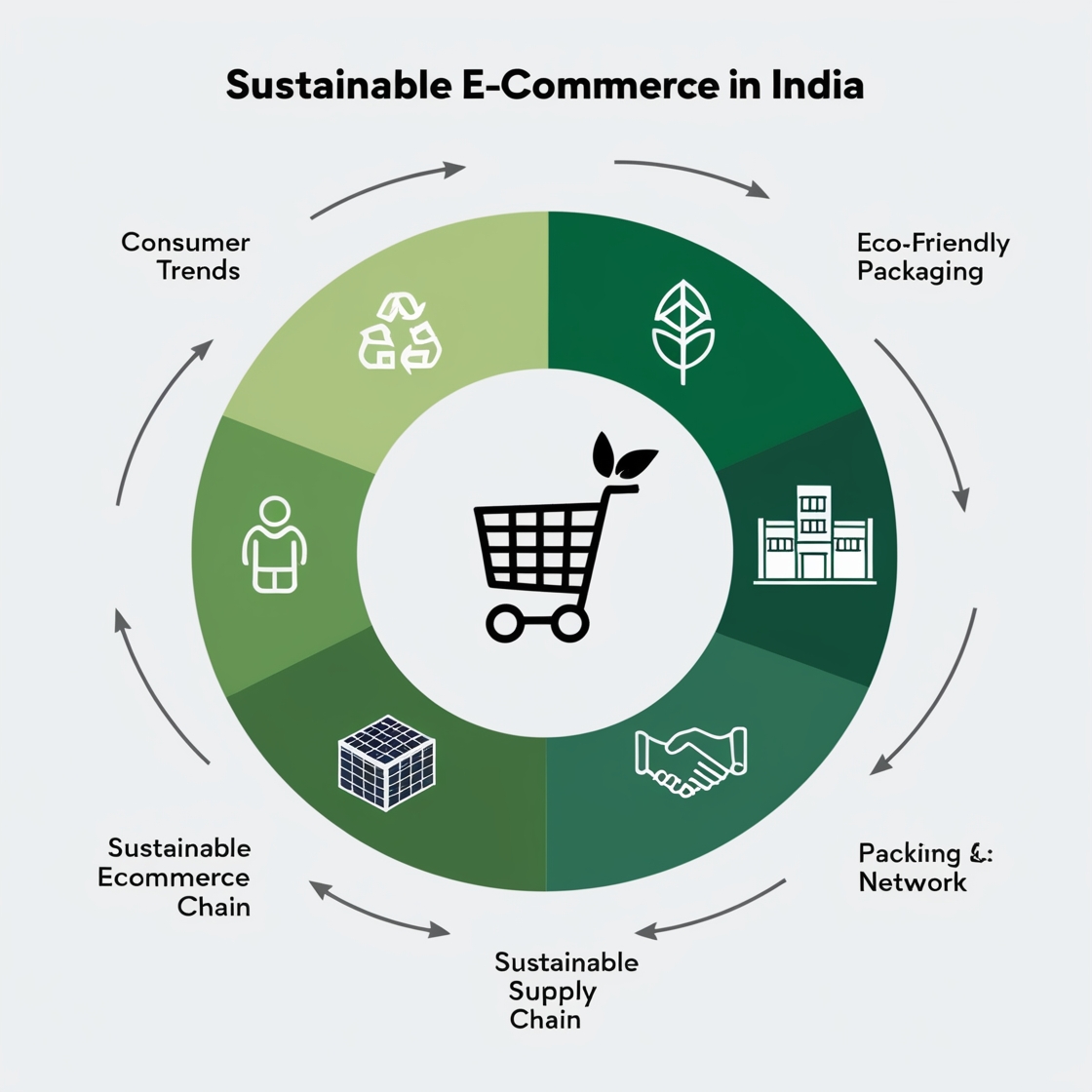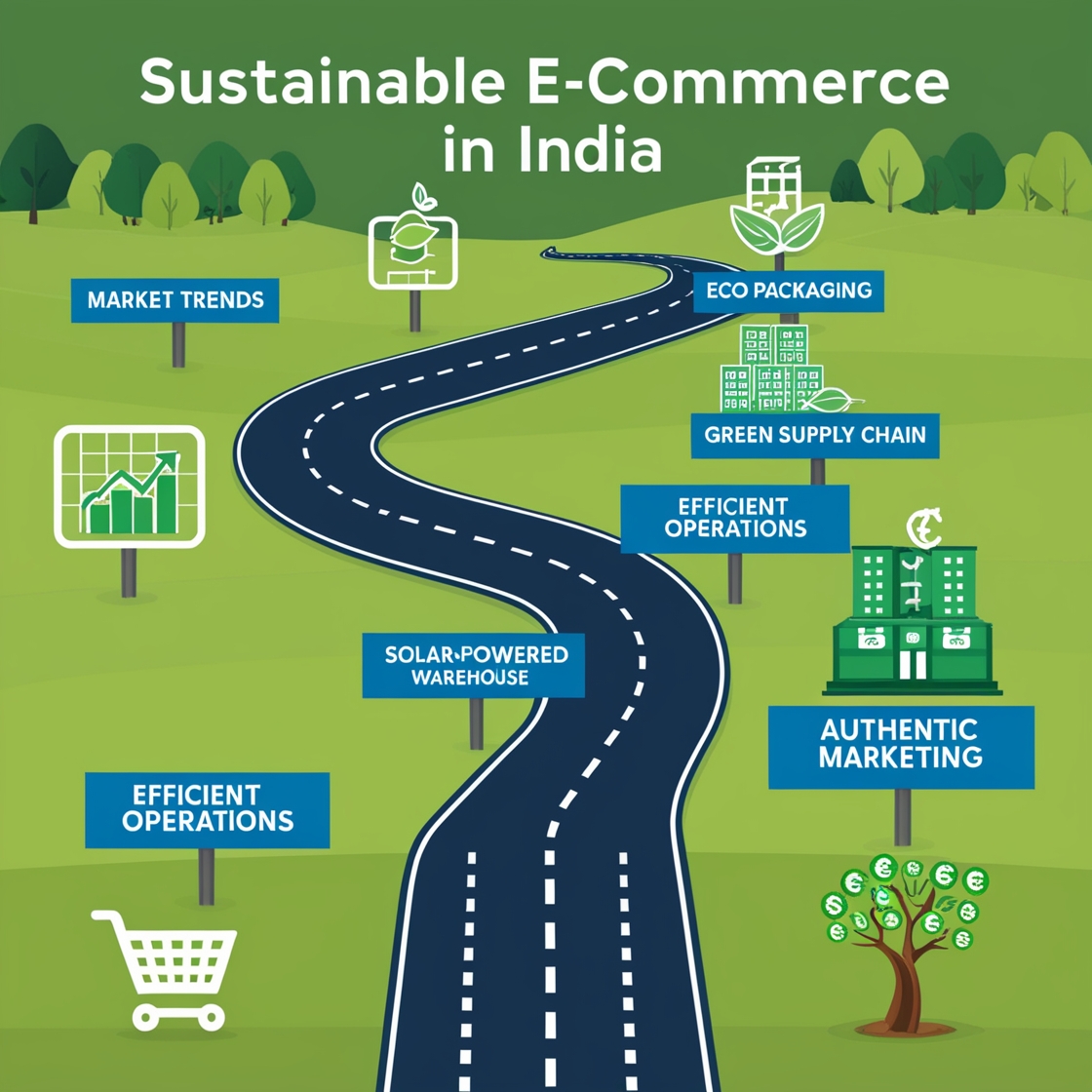
Introduction
Over the last few years, sustainability has turned from a mere buzzword into a genuine concern of Indian enterprises. Environmental issues are at the forefront of the public mind, and consumers are becoming more conscious of their buying decisions. Establishing an environmentally friendly e-commerce business is both an ethical obligation and a smart business strategy. This guide outlines the main ways to create and manage a sustainable online business in India that can help you mitigate your environmental footprint while potentially increasing your profitability.
Development of Sustainable E-commerce in India
The Indian e-commerce sector is on the fast lane, predicted to hit $200 billion in 2026. This increase brings about the materialization of a shift in consumer tendencies, with many opting for eco-friendly and sustainable products and procedures.
Current Trends and Consumer Attitudes
- A recent survey by Bain & Company reveals that 52% of Indian shoppers are ready to pay extra for sustainable products.
- The COVID-19 outbreak has hastened the adoption of the ecological trend in India, with 85% of the population preferring more sustainable habits.
- Women aged 20-40 and the youth make the majority of the change, with the highest eco-friendly brand selection from Gen Z and Millennials.
Benefits of Sustainable Practices Adoption
- Making the brand synonymous with positive perceptions and steadily increasing customer loyalty.
- Operational efficiency savings resulting from the fittest resource use and adoption of green technologies.
- Compliance with emerging environmental regulations
- Access to a growing market of eco-conscious consumers
- Improved employee satisfaction and retention

Eco-Friendly Packaging Solutions for Indian E-commerce
With e-commerce sustainability, packaging is the most visible part of it. By applying green-friendly packaging solutions, you can expose the customers to a lot of the environmental impacts of this practice.
Innovative Packaging Materials
- Biodegradable packaging products, like cornstarch or mushroom roots
- Paper and cardboard products that were recycled
- Using packaging options like cloth bags for item clothes that can be reused
- A way of making packaging that dissolves in water for some products
Optimizing Package Sizes and Reducing Waste
- Use Artificial Intelligence that works to determine the exact box sizes for each order
- Implement a “ship in own container” (SIOC) approach for products that don’t need extra packaging
- Allow the customers to choose packaging that is minimal to accept the deal
- Use digital invoices and packing slips to reduce paper waste.
Sustainable Supply Chain Management
It is not just the use of eco-friendly products and practices in the business that ensures actual sustainability. Customers should confirm their reliability.
Partnering with Eco-Conscious Suppliers
- Design a supplier code of conduct, including environmental standards
- Minimize transportation emissions by sourcing products from local manufacturers
- Identify suppliers that use renewable energy and eco-friendly materials
- Work with suppliers to tinker and create greener products
Reverse Logistics and Circular Economy Principles Implementation
- Develop a streamlined returns procedure that cuts back waste
- Launch a refurbishment scheme for returned items
- Consider the rental or subscription model for specific product categories
- Engage with recycling facilities to ensure that end-of-life products are disposed of safely
Green Operations and Energy Efficiency
Sustainable e-commerce extends well beyond the products available. It is also necessary to look at your daily operations, the environment, and the damage you might be doing.
Sustainable Warehousing and Fulfilment Practices
- Make the layout of warehouses more conducive to energy-saving options
- Apply energy-saving stable lighting and control the climate in the rooms
- Adopt water-saving practices in the centers
- Utilize electric vehicle technologies to carry out the last mile of the delivery
Using Renewable Energy Solutions
- Deploy solar panels on the rooftops of warehouses and the office
- Shift to a green energy supplier for your electricity needs
- Use energy management systems to check and minimize energy usage
- Buy efficient equipment and appliances that require less energy

Marketing your Sustainable E-commerce enterprise
You have to tell other people about the green projects to earn their trust and win over the green segment of consumers.
Effectively Communicating Your Eco-Friendly Initiatives
- A specific website section must be created for your sustainability projects.
- Use social media to show your sustainable practices in detail.
- Work with environmental organizations and environmental influencers.
- Take part in eco-friendly events and trade shows.
Trust Building Through Transparency and Certifications
- Get eco-certifications relevant to your industry (e.g., Green Business Certification, LEED).
- Publish sustainability reports regularly in which you mention your achievements and targets.
- Be open about the impact your products have on the environment.
- Encourage and show customer reviews that come from your sustainable business practices.
Conclusion
Creating a sustainable e-commerce business in India is not just going with the trend; it’s about ensuring your business’s continuity in an environmentally concerned world where customers and regulators are joining forces. By enhancing eco-friendly practices in your operations, such as packaging and the management of the supply chain, you may not only lessen your adverse environmental impact but also increase your overall customer loyalty and market share, ultimately increasing your sales.
Keep in mind that sustainability is a journey, not a destination. Start with small achievable goals and make gradual efforts towards enlarging them. As you move forward, your contributions to the rehabilitation of our planet will define you as the leader of this developing e-commerce sector in India.











